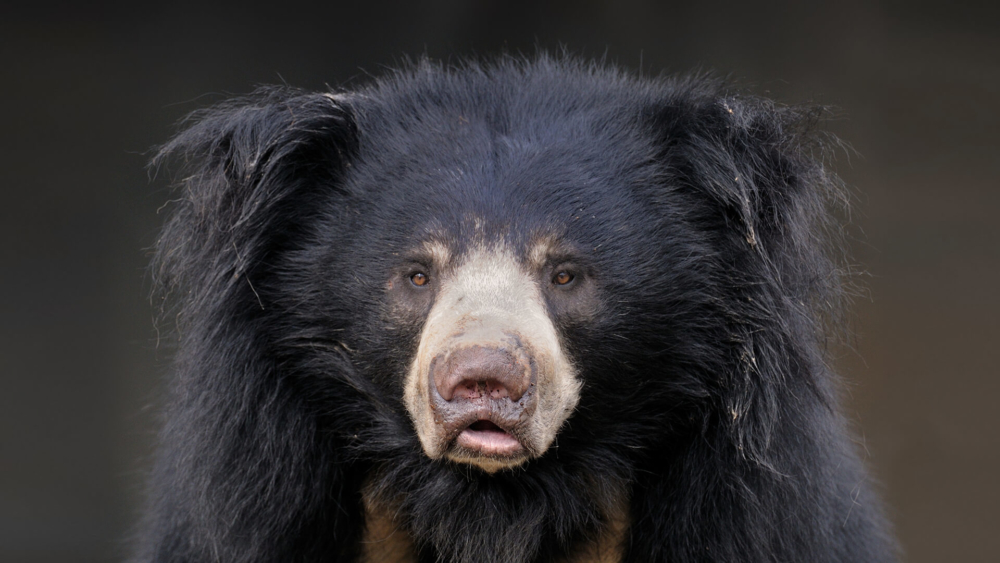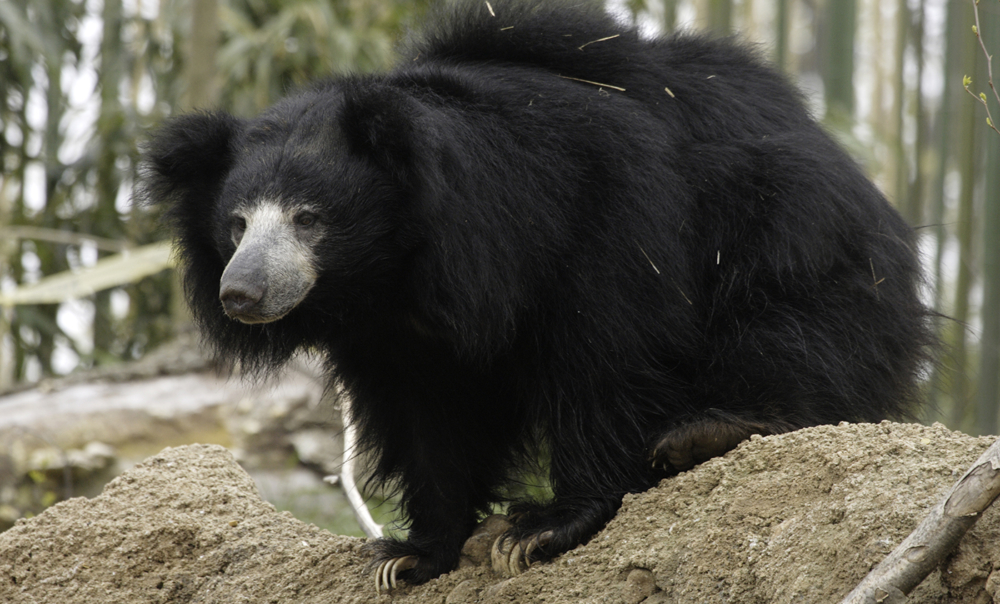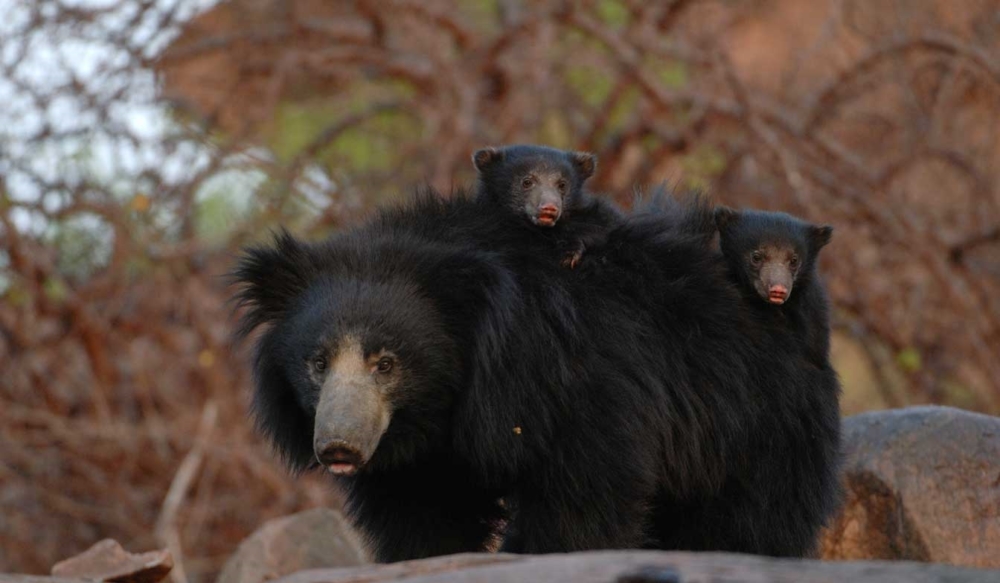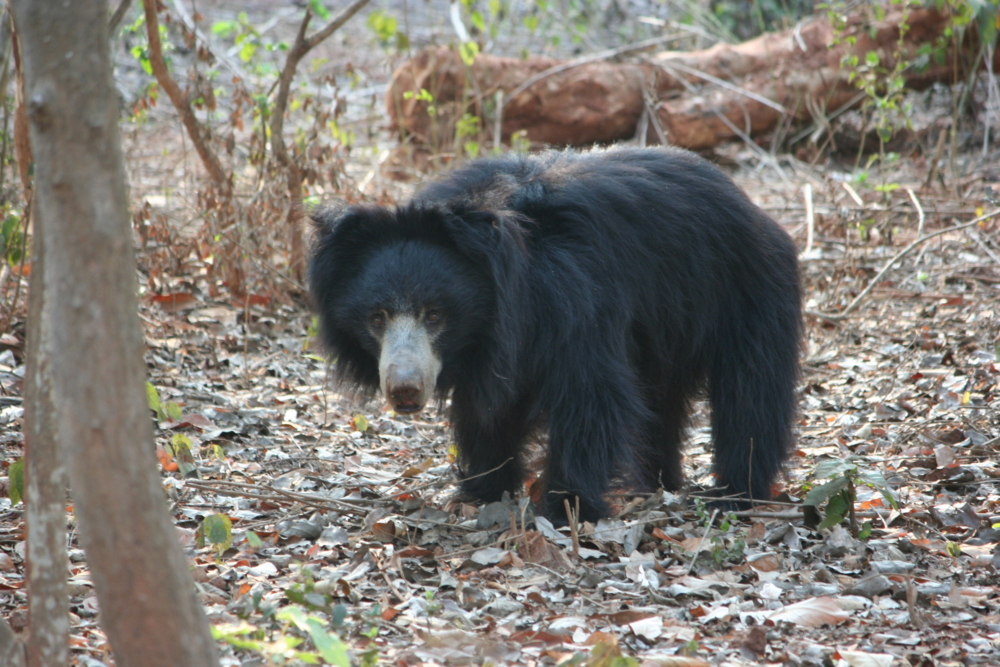Perhaps the most unique appearance is the gubach bear, which leads a different way of life from the usual. All animal lovers will be curious to learn interesting facts regarding the habitat and diet of the predator.
Material Content:
Description and features of the gubach bear
In appearance, the animal is more like a sloth or anteater. His habits are also peculiar. Genetically, gubach refers to clubfoot. It got its name because of the structure of the muzzle:
- its shape is narrow and elongated;
- lips protruding and loose;
- very long tongue;
- small teeth;
- high forehead.
In length, the animal reaches 1 m 80 cm. The average height of an adult is 70 cm. The animal weighs about 50-70 kg. Gubach has long legs with wide feet, large ears and a white mark on the chest in the form of the letter V.
This species is one of the longest among the representatives of the bear family. Shiny coat is black with red and brownish blotches.
Lifestyle & Habitat
Speaking of the sensory organs, it is worth mentioning the excellent sense of smell of the gubach. His hearing and vision are far from ideal. A bear does not immediately notice near a person, however, it senses it.
Gubach bear lives in southern Asia, this region is considered the birthplace of a white-breasted bear. The species is concentrated mainly in India. Outside the range of Asia, a predator can be seen only in institutions for keeping animals for the purpose of demonstration.
Sometimes found with a bear in mountainous regions. It lives in the ranges of the Himalayas. Gubach does not seek to conquer giant peaks. He is comfortable at an altitude of about 3 thousand meters above sea level. That is why his second name is "Himalayan bear."
Gubach is able to destroy crops on cultivated land. In the afternoon, meeting a bear is quite difficult. He falls asleep in a disguised place. The beast is active at night. Only females with cubs go out to look for food in the afternoon. When young animals grow up, the whole family returns to the usual schedule.
Diet
Gubach’s favorite treats are termites and ants. The beast wields a mouth and claws that are long and sharp, like a knife. He is able to get to the center of any anthill.
The predator cleans the moves from dirt and licks insects. Those that are hiding in narrow slits, the bear sucks at the expense of his lips, which he turns into a tube. Moreover, this process is accompanied by a loud noise, which is heard at a distance of 120 m. In one "sit down" the beast is able to eat a large colony of ants.
Some bears eat date palms. They can eat sugarcane and corn, and from hunger they absorb roots, devastate bird nests and attack other animals.
In summer, gubach eats berries and fruit. He loves bee products. Therefore, the bear is sometimes called "honey."
Reproduction and longevity
A sloth bear lives from about 20 to 40 years old, provided it exists in the wild. In captivity, a predator can survive up to 45-50 years, but reproduces worse. Females give birth once every 3-4 years. Conception occurs in April, and in the winter bear cubs appear - from one to three.
Toddlers are born blind and deaf. After a couple of months, their eyelids open and a rumor erupts. The mother takes care of the cubs until biological puberty - the third year of life. After this, the female prepares for another fertilization.
Why is listed in the Red Book
The Red Book includes endangered species. The gubach belongs to them. Today, there are only 20,000 Himalayan bears. For this reason, they are listed as rare animals.
Farmers and ordinary hunters illegally kill bears. Some do this, saving their lives, because the gubach is a rather aggressive representative of the animal world. There are other reasons for the decline in the number of species:
- hunting animals for sale in zoological parks;
- hunting poachers;
- poor ecology and environmental pollution;
- loss of habitat.
Today the population is in a stable condition. There is currently no sharp decline in the number of bears.
Interesting Facts
There are some interesting facts without which a brief description of the species would be incomplete:
- Gubach easily climbs a tree 8 meters high. For honey, he’s capable of much.
- Animals copulate several times a day, mating lasts about half an hour.
- Female bears carry their cubs on their backs. No other species does this.
- Gubach fat is a medicine against rheumatism.
- Between 1989 and 1994, more than 700 cases of attacks of this type on a person were recorded. About 50 of them are fatal.
It is also noteworthy that the gubach does not hibernate. It is active throughout the year. This is also why the “honey” bear is one of the most interesting among its relatives.
















